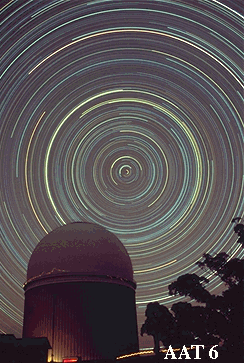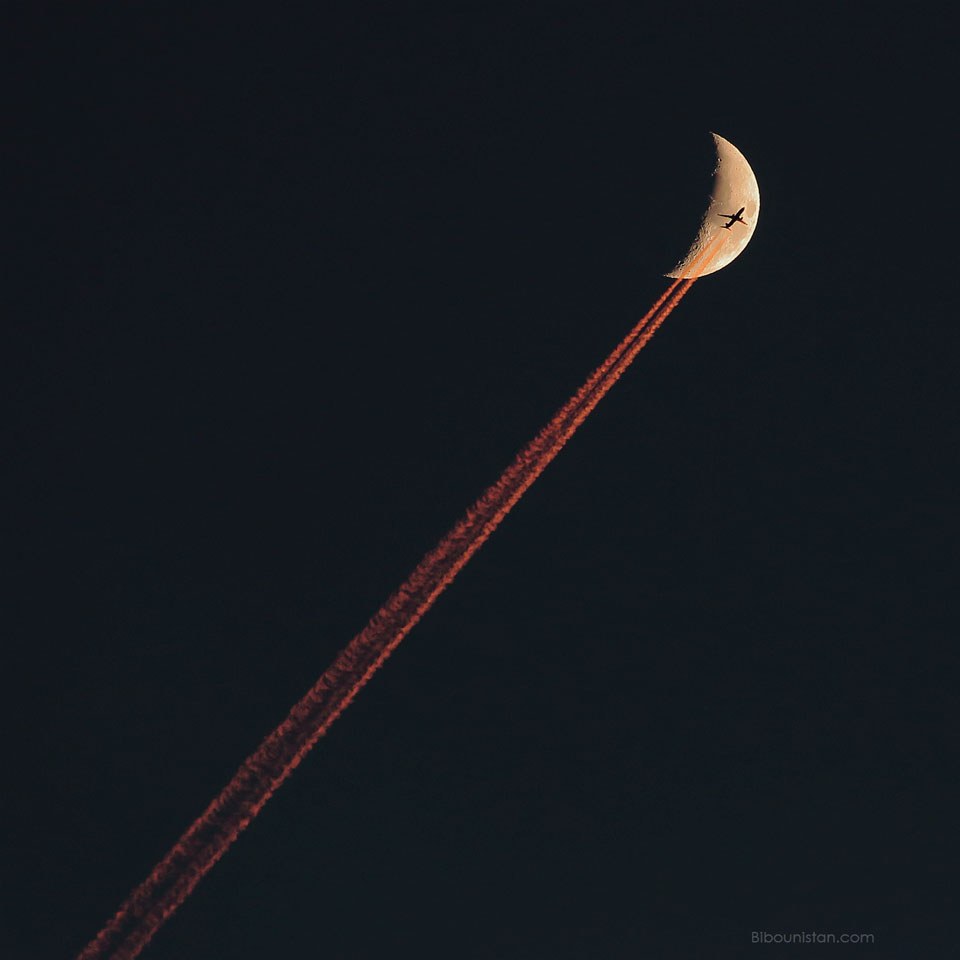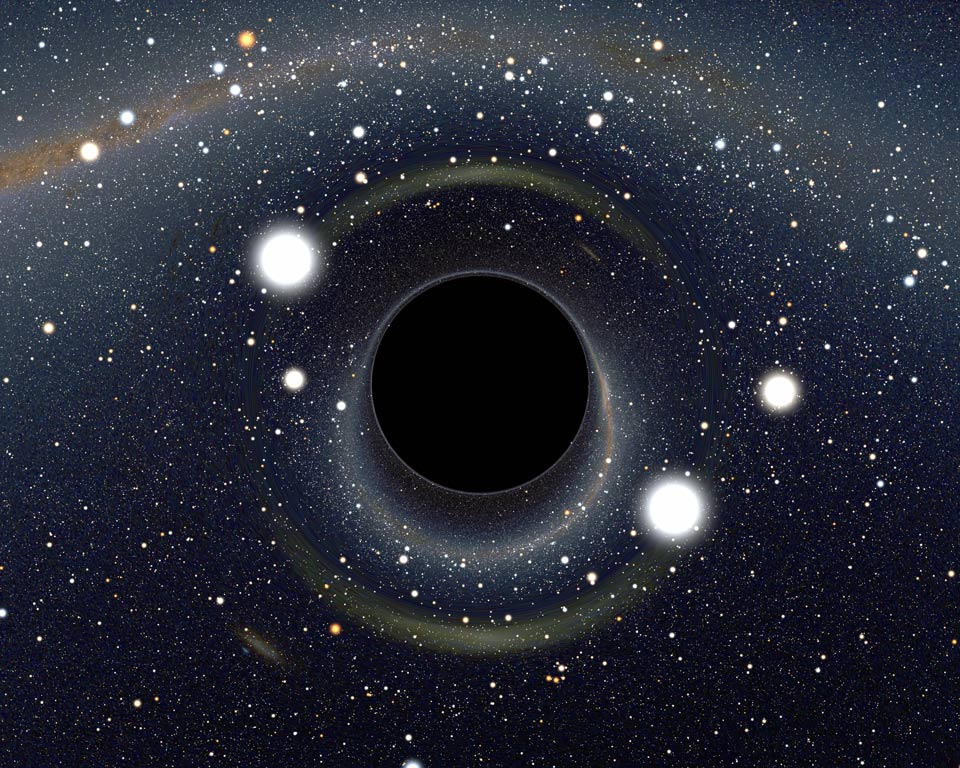Space at
your fingertips.

"I want to know why the universe exist, why there is something greater than nothing."

Steven Hawking
Scientist, Space Lover

As the Earth spins on its axis, the sky seems to rotate around us. This motion produces the beautiful concentric arcs traced out by the stars in this time exposure of the night sky. In the foreground of the picture is the dome of the Anglo-Australian Telescope in central New South Wales Australia. In the middle of the picture is the South Celestial Pole, easily identified as the point in the sky at the center of all the star trail arcs.

No, this is not a good way to get to the Moon. What is pictured is a chance superposition of an airplane and the Moon. The contrail would normally appear white, but the large volume of air toward the setting Sun preferentially knocks away blue light, giving the reflected trail a bright red hue. Far in the distance, well behind the plane, is a crescent Moon, also slightly reddened. Captured a month ago above Valais, Switzerland, the featured image was taken so soon after sunset that planes in the sky were still in sunlight, as were their contrails. Within minutes, unfortunately, the impromptu sky show ended. The plane crossed the Moon and moved out of sight. The Moon set. The contrail became unilluminated and then dispersed.

What would you see if you went right up to a black hole? Featured is a computer generated image highlighting how strange things would look. The black hole has such strong gravity that light is noticeably bent towards it - causing some very unusual visual distortions. Every star in the normal frame has at least two bright images - one on each side of the black hole. Near the black hole, you can see the whole sky - light from every direction is bent around and comes back to you. The original background map was taken from the 2MASS infrared sky survey, with stars from the Henry Draper catalog superposed. Black holes are thought to be the densest state of matter, and there is indirect evidence for their presence in stellar binary systems and the centers of globular clusters, galaxies, and quasars. Gallery: Thursday's Partial Solar Eclipse
 Expanse
Expanse